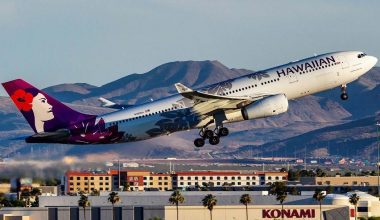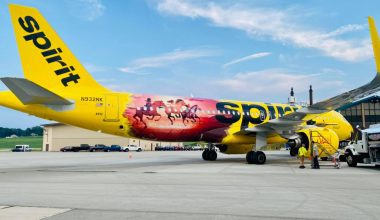France-based Dassault Aviation SA is an esteemed brand in the field of business jet manufacturing. It commands a venerable and distinguished reputation for producing the ”Dassault Falcon” family of civilian/business jets. One of the iconic members of the Falcon family is the super-midsize, long-range Falcon 50 business jet. The aircraft is the first in Dassault’s lineup of business aircraft to fly across the Atlantic Ocean. The French airframer initiated design work on Falcon 50 in 1974 and started its industrial production in 1976. The trijet Falcon 50 is based on the earlier successful Dassault Falcon 20, sharing much of its airframe and capacity features while adopting more advanced jet engines and other major improvements.

Development of Dassault Falcon 50
The Falcon 50, conceived in 1974, was a response to the growing demand for longer-range business jets in the US. Dassault Aviation, the French aircraft manufacturer, saw an opportunity to capitalize on this demand by creating a business jet that could perform transoceanic flights. The Falcon 50, an extensive derivative of the Falcon 20, shares the same fuselage cross-section and similar capacity. However, its superiority lies in its unique selling points-the supercritical wing design and the trijet layout, which significantly improve its range and fuel efficiency.
Also Read: Rise of the Falcon
The first Falcon 50 prototype hit the skies with its inaugural Bordeaux-Merignac flight on November 7, 1976. The agreement between the French government, Aerospatiale, and Dassault paved the way for the industrial production of the type at the mean point.
The Garrette TFE 737-3 jet-engined aircraft secured its French airworthiness certification on February 27, 1979, followed by US FAA certification 8 days later.
Under the agreement, the production of the Falcon 50 was a collaborative effort. The fuselage, which makes up 55% of the aircraft’s frame, was built by Aerospatiale at its facility in Saint-Nazaire on the West Coast. Dassault, on the other hand, crafted the aircraft’s supercritical wing at its Colomiers plant in the southwest. The final assembly and flight testing of the Falcon 50 took place at Merignac in Nouvelle-Aquitaine, marking the culmination of this joint production process.
Design features of the Falcon 50
The Falcon 50, an enhanced three-engined iteration of the successful Falcon 20, is a testament to Dassault’s commitment to innovation. Powered by three Garrett TFE731 turbofans, the aircraft can cover up to 3,622 miles, a significant leap from its predecessors. Its transoceanic capabilities, a first for the Falcon family, are primarily attributed to its three-engine arrangement and revolutionary wing design, showcasing the aircraft’s advanced engineering.
The trijet layout gives the Falcon 50 a much-needed range improvement, enabling it to cross the North Atlantic or the US nonstop. Incorporating supercritical wings reduces the aircraft’s drag at transonic speeds and increases fuel efficiency.
Over the years, the Falcon 50 has evolved, introducing different variants that showcase its adaptability and continuous improvement. The Falcon 50EX, for instance, is an updated version of the Falcon 50 with more powerful engines and improved avionics. Another variant, the Falcon 50 ‘Susanna,’ was a modified, single Iraqi Falcon 50 used for training the Mirage F1 crew. Fitted with Cyrano IV-C5 radar and two AM-39 Exocet antiship missiles, the Iraqi warplane could perform an attack and reconnaissance mission. Susanna flew to Iran during the Gulf War in 1991 and has remained absent from public view, adding an element of mystery to the Falcon 50’s evolution.
Specifications of Falcon 50
The basic initial variant Falcon 50 is a 60-foot-seven-inch-long and 22-foot-nine-inch-high business aircraft. The transoceanic aircraft relies on its 3 x Garrett TFE 731-3 jet engines to achieve a fuel range of 3,622 miles. The aircraft can perform a nonstop North Atlantic crossing at a maximum speed of 540 mph at a staggering 31,000 feet.
The trijet can accommodate two crew in the front and 8-9 passengers in the cabin. The 5ft 9 inches long and 6 ft 1-inch wide cabin provides ample space and allows business travelers to fly comfortably.
Other specifications regarding Falcon 50 are given below:
- Wing span: 61 feet 8 inches
- Baggage Volume: 8.3 sq. feet
- Unladen weight: 20,200 lbs
- Takeoff weight: 38,801 lbs
Falcon 50EX and its specifications
Serge Dassault launched the Falcon 50EX, the upgraded version of the Falcon 50, in April 1995. The new aircraft, which was destined to supplant the original Falcon 50, first flew on April 10, 1996, at the hands of Jean Bongiraud and Etienne Faurdessus. The French plane maker commenced the Falcon 50 EX deliveries in the late 1990s and continued the variant’s production until 2008.
The Falcon 50EX is powered by 3 DEEC-controlled TFE 731-40 engines with increased thrust (1,680 kg/3704 lb each), pushing the aircraft’s climb rate, cruise speed, and range to a higher level. Adopting advanced engines also results in improved specific fuel burn (reduction by 7%) along with significant maintenance cost savings.
Apart from engines, the 50EX also outshines the original Falcon 50 in avionics and rudder control system, flexing unparalleled technological capabilities.
The specifications of the Falcon 50EX are delineated as follows:
General characteristics
- Crew: 2
- Capacity: 8-9 passengers /1080 kgs
- Length: 60 feet 9 inches
- Height: 22 ft 11 inches
- Wingspan: 61 feet 11 inches
- MOTM: 18,008kg
- MTOW: 16,200kg
Flight performance
- Maximum speed: 1,015km/hr (631mph, 548 kn), Mach 0.86
- Cruise speed: 903km/hr (561mph, 488 kn), Mach 0.85
- Fuel range: 5,695 km/ 3075 mi (6050km/3260 nm at Mach 0.75)
- Service ceiling: 49,003 ft
- Climb rate: 2053.7 ft/min
- Takeoff run: 4,934 ft
- Landing run: 2,247 ft
As we can see, the Falcon 50EX has an edge over the Falcon 50 in speed and range. The new TFE 731-40 turbofans-powered 50EX can fly as far as 6,050km at Mach 0.75 speed. Similarly, it can cover a distance of 5,695m when flying at the maximum speed of Mach 0.86. Furthermore, the aircraft becomes airborne and reaches cruising altitude in a relatively shorter period (41,000 feet in 23 minutes).
Commercial performance of the Falcon 50
The trijet Dassault Falcon 50 achieved a considerable commercial footprint, albeit falling short of reaching Falcon 20’s sales figure. The French aircraft manufacturer Dassault Aviation produced 352 examples of Falcon 50 over the 32-year production run from 1976 to 2008.
- Falcon 50: 252 examples (one functioning as a prototype for the 50EX)
- Falcon 50EX: 100 manufactured (serial numbers 253-352)
- Falcon 50 Susanna: Single (modified)
Regarding Falcon 20’s commercial performance, the Paris-based aerospace giant sold 512 examples. The twin-engined Falcon 20 proved valuable for civil and military operators, leading to its continued production run for 26 years. Dassault’s first business jet, Falcon 20, paved the path for the development of more advanced jets of the Falcon family.
Primary operators of the Falcon 50
The trijet, long-range Falcon 50s are mostly operated by corporate/business and individual owners. Customers love the Falcon 50 for its long-range capability, efficiency, and comfy cabin. Pilots love the trijet for its reliable flight characteristics, amazing takeoff and landing performance, and ability to withstand harsh conditions. Likewise, owners appreciate the Falcon 50’s lower fuel consumption and maintenance cost advantage.
In addition to individual owners, some military and government operators have procured the Falcon 50. Notable military operators include the Iranian Air Force, Royal Jordanian Air Force, Royal Moroccan Air Force, Portuguese Air Force, Swiss Air Force, and Spanish Air Force.
Falcon 50’s successor: Dassault Falcon 900
Dassault Falcon 900 is a corporate trijet aircraft developed in the 1980s to replace its predecessor Falcon 50. The Falcon 900 is a successor to the Falcon 50 and features an advanced design incorporating composite materials. With over 500 examples built, the aircraft has performed excellently commercially. First produced in 1984, the Falcon 900 continues to roll off the production line today, thanks to its versatility and technological advancements. Different iterations of Falcon 900 include Falcon 900 MSA (Maritime patrol version), Falcon 900B (revised version), Falcon 900 C (replacement for 900B), Falcon 900 EX, Falcon 900DX, Falcon 900EX EASy, Falcon 900 LX, Envoy IV (RAF military designation), VC-900A (Italian military designation), etc.
Falcon 50 Frequently Asked Questions:
1. How much does a Falcon 50 cost?
The Falcon 50s from the mid-late 1980s can set you back around 0.85-$1.6million. Likewise, Falcon 50s produced between 1998 and 2003 have a price point of $2.5-$3.5 million. The exact price may vary depending on the aircraft’s age, model, and seller.
2. Is the Falcon 50 a good plane?
Falcon 50 is a desirable business jet with a transcontinental and transoceanic flight range capability. The aircraft is reliable, fast, luxurious, and offers good value for money. The Falcon 50 is a good plane with an affordable price point.
3. How many seats does a Falcon 50 have?
The typical configuration of the super-midsize Falcon 50 accommodates 8 to 9 passengers.
4. How much fuel does a Falcon 50 hold?
A Falcon 50 can hold 8,763 liters of fuel.
5. How far can a Falcon 50 fly?
Falcon’s first transoceanic jet, the iconic Falcon 50, can fly nonstop for up to 5695km.








